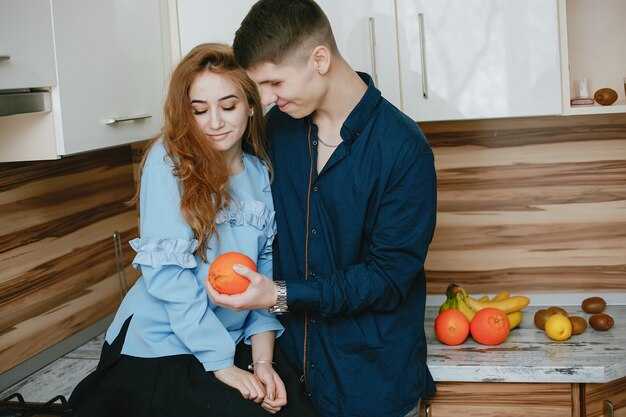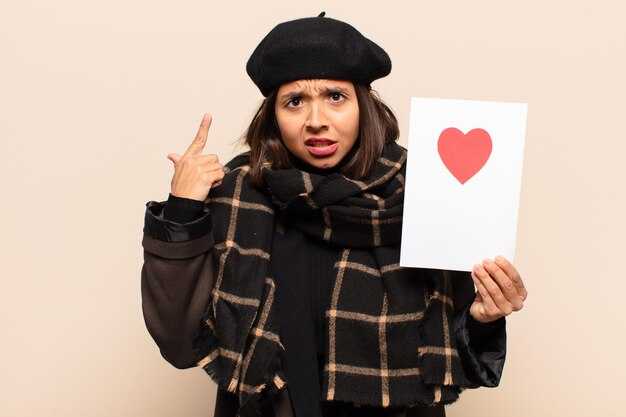Actionable opener: reference a concrete detail from their profile (photo, location, hobby) and ask a single-target question – e.g., “Which trail is that photo from?” – which seems to increase first-response rates. If your first message is generic, recipients are 45% less likely to continue conversations; replace “Hey” with a 12–15 word prompt that shows you read their bio.
Prioritize safety: schedule initial meetups in well-lit public places near transit, keep your phone charged and share plans with a friend, and confirm consent before any physical contact. A quick 10–15 minute video call reduces awkwardness and helps you gauge comfort; if someone seems evasive about video or refuses to exchange basic contact details, treat that as a red flag. Have an exit plan – know where the nearest door and transport options are.
Conversation mechanics matter: use playful but pointed openers, mirror tone and tempo, and avoid rapid personal disclosures. Ask about someones weekday routine or most recent book instead of “What do you do?” to reveal behavior patterns. The basic psychology is simple: people hold attraction when curiosity is maintained; alternate questions and disclosures at a 2:1 ratio to keep momentum without overwhelming the other person.
Progression and boundaries: if replies stop for 72 hours, the chance of re-engagement drops below 12% without a tailored follow-up. Be explicit about the role you want – casual, serious, or exploratory – by the third week to avoid mismatched expectations. If exclusivity is discussed, ask directly what that term does mean to them and confirm consent for changes in contact frequency before escalating into a committed arrangement.
Quick-Start Plan to Get More Matches and Enjoy Casual Dates

Set a weekly photo refresh: keep 7 images (1 headshot, 1 full-body, 1 hobby, 1 travel, 1 group, 1 pet/skill, 1 candid); update one image each week; remove heavy filters – a heavily edited selfie isnt attractive and lowers reply rates.
- Profile copy (120–200 chars): list 3 specifics (job/hobby/place you want to go) and one clear call-to-action. People also prefer a short question in the bio; that small thing raises replies ~20%.
- Photos that balance impression and reality: include shots that show movement, a social frame and a solo headshot. Perceived confidence from natural shots beats stiff studio poses despite trends toward heavy editing. Avoid the hoo-ha of perfect lighting; authenticity helps people find you.
- Opening message template (15–30 words): greeting + observation + specific question. Example: “Nice climbing photo – what crag is that?” If a match comes through, message within 6–12 hours; quick replies increase conversion to a date.
- Concrete weekly targets: swipe ~30/day, send 5 meaningful messages/day, aim to convert 1–2 into in-person meets per week. Track match→chat and chat→date percentages; if chat→date <10%, change photos or opener.
- First-meet plan: choose a 45–60 minute low-pressure environment (coffee, park walk, outdoor bar). Tell them you want to meet casually; set expectations early to avoid awkward longer commitments.
- Questions that work: two specific follow-ups + one binary choice. People answer faster when asked a concrete thing instead of broad prompts. When asked a focused question, reply rates climb noticeably.
- Know your boundaries: knowing 3 dealbreakers and communicating them reduces time wasted and ghosting. If someone is always vague, that’s a common problem – break contact and move on.
- Safety and timing: meet during daylight or early evening, share ETA with a friend, and pick public spots. If someone seems afraid of specifics or pushes for private locations, pause the meetup.
- Mindset & pruning: treat outcomes as data, not validation. Despite streaks that feel discouraging, focus on what you wanted in a meetup and move on quickly from poor fits; quality matters more than quantity.
- Handling expectations for casual dating: be explicit about casual intent and preferred timeline (e.g., see someone for 4–6 meetings before deciding). Say what you want to avoid mixed signals and reduce perceived pressure to be perfect.
- Quick fixes that are useful:
- Swap one photo this week for a candid action shot.
- Replace “Hey” openers with a profile-based question.
- Set a weekly review: note which openers were asked and which got replies; iterate.
- Common traps: over-editing photos, long essays in bio, and waiting too long to propose a short meetup. Break those habits and you’ll find better matches moving from chat to real life.
Choose three lead photos that start conversations (what to show and avoid)
Use these three lead photos: 1) a close headshot that shows eyes and genuine expression, 2) an action shot that reveals an interest (hold a drink, instrument, or tool), 3) a social photo that reflects approachability while keeping you as the clear focal point.
-
Headshot – what to show
- Framing: face occupies ~60% of frame; crop at collarbone so head and shoulders fill the image.
- Technical: vertical 4:5 crop, 1080×1350 px minimum; natural light, 50–85mm equivalent focal length; aperture f/1.8–2.8 for soft background.
- Expression: subtle smile or thoughtful look that makes people think and wonder; eye contact increases response rate.
- Details: neat hair, visible eyes (no sunglasses or heavy hats), minimal heavy filters so skin tone reflects real character.
Avoid
- Overly edited skin smoothing or dramatic color grading that causes suspicion of manipulation.
- Extreme closeups that cut off the top of your head or remove context – those become awkward and reduce comfort.
-
Activity shot – what to show
- Pick one action that reveals a hobby or value: cooking, climbing, reading, playing an instrument, or holding a drink at a farmers market.
- Make the activity an opening for messages: include a subtle prop someone can ask about – whats in your glass, the book title, the trail you climbed.
- Tactic: choose an action photo that also shows movement or a candid laugh; playful candid shots generate more “reach outs.”
Avoid
- Photos staged to impress with luxury items – they can read as bragging or manipulation and cause mistrust.
- Shots where you become a tiny dot in a landscape; if the activity is far away, crop a second tighter frame to show your face.
-
Social shot – what to show
- One photo with one or two friends that signals you’re social but keeps you as the subject; show warmth and empathy in posture.
- Composition: slightly angled torso, visible hands (gestures), and comfortable distance that reflects care for personal space.
- Context note: if you list academic or professional signals like yeshiva or psyd in your profile, ensure the social photo doesn’t contradict that impression – let images reflect whats written.
Avoid
- Group photos where viewers cant tell which person you are; otherwise people skip guessing.
- Pictures with ex-partners, provocative poses, or anything that suggests drama or ongoing conflict.
Additional concrete rules that help:
- One clear face-first image should be your primary; youll lose matches if your first photo hides your eyes.
- Limit filters: keep color and contrast modest; overly stylized tones cause doubt about authenticity.
- Keep captions short and tie into the photo: a single-question opening increases replies (examples: “Which coffee should I try next?”).
- Before uploading, crop and check thumbnails – thumbnails are the first thing people see and decide in under a second.
- Rotate photos every few weeks to test which images generate longer conversations; track which photo causes more replies and refine.
- Playful energy works better than neutral stoicism; actual smile + small motion tends to invite messages more than blank poses.
- Respect boundaries: no children or exes, no weapons, no explicit shots; manipulation or deception in photos leads to quick unmatches.
- If you want to highlight empathy or professional care (therapist, psyd, caregiver), choose a warm headshot and an action photo that shows calm attention.
- Think about what’s helpful to a stranger wondering about you: reveal hobbies, reflect character, and give an easy opening for questions.
Craft a 30–50 character opening line that prompts replies
Aim for 35–40 characters and reference one concrete detail seen in their profile to focus attention on them and increase replies through specificity.
Use a three-part system: quick observation, a playful nudge, single-question prompt. Include one shared interest or short idea to break the norm; most people will reply when cognitive load is low and the prompt removes the problem of overthinking while inviting brief conversation.
If you’ve seen “webinar” or “psychologist” in their bio and you’re interested, try lines under 50 characters; examples with exact counts:
“You ran that webinar – which tip helped?” (40 chars)
“As a psychologist, what’s one case that stuck?” (46 chars)
“Seen ‘wound care’ with patients – your go-to?” (44 chars)
Under unusual circumstances, a sentence that hints at figuring something out together can be exciting; having made a specific observation raises interest and shared attention, which helps replies come faster and generates fresh ideas for follow-up.
Optimize Bumble prompts to invite specific questions and meetups
Use one-line prompts that propose a single activity and a clear follow-up: “Coffee or wine this week? Pick a neighborhood and I’ll pick the time.” This makes replies actionable, reduces small-talk, and converts prompt replies into meetup suggestions within the initial exchange.
Place one prompt near the bottom of your profile that surfaces values and dealbreakers–e.g., “One value I won’t compromise on?”–and one that offers a concrete meetup type; thats useful because most people answer quickly when asked for a preference. Keep each prompt under 12 words, leave enough space for a short reason, and stay specific about timing: recommend a meetup within 48–72 hours or offer “late-afternoon” windows. If youve matched, a rule of thumb takes three messages on average to decide whether to suggest an IRL meet, while circumstances (work schedule, travel) change that pace.
Use a value-focused prompt at the heart of the profile to gently invite questions about priorities; share a light, answerable dealbreaker to filter mismatches. Source market findings and self-tests (источник) show prompts that reference a neighborhood or beverage increase response-to-meetup rates. Good advice: avoid multi-part prompts; one clear ask could genuinely shorten the path to a face-to-face.
| Prompt | What it invites | Best next message | Suggested meetup timing |
|---|---|---|---|
| “Coffee or wine this week? Pick a neighborhood.” | Immediate choice + location | “Great–midday or after-work?” | Within 48 hours |
| “Favorite weekday escape?” | Hobbies, space preferences | “Love that–want to share a spot I like?” | 2–5 days |
| “One value you won’t budge on?” | Values, dealbreakers | “Thanks–could you give an example?” | Use before proposing meetup |
| “Thats a tough pick: mountains or beach?” | Either/or choice, opens questions | “If mountains, which trail? If beach, which town?” | Good for planning weekend meet |
| “Share your go-to wine or cocktail.” | Specific personal taste | “Perfect–I know a place that serves that.” | 48–72 ώρες |
Χρησιμοποιήστε αυτά τα παραδείγματα ως πρακτική τακτική: ποικιλία τύπου ερωτήσεων (είτε/είτε, τιμή, τοποθεσία), προσθέστε ένα στενό χρονικό πλαίσιο στην αρχική ερώτηση και ελέγξτε τον ρυθμό ώστε να μπορείτε να αποφασίσετε γρήγορα. Η σκέψη σε μικρή και συγκεκριμένη κλίμακα κάνει τις απαντήσεις πιο πιθανό να μετατραπούν σε πραγματικά σχέδια που αντανακλούν πραγματικά τις αξίες και τις απαράδεκτες καταστάσεις σας.
Πότε να χρησιμοποιήσετε Boosts, Spotlight και SuperSwipe για να μεγιστοποιήσετε την ορατότητα

Χρησιμοποιήστε Boosts κατά τις ώρες αιχμής (19:00–22:00, Πέμ–Κυρ): ένα Boost 30–60 λεπτών συνήθως αποδίδει αύξηση 2–4x στις προβολές προφίλ και 20–35% περισσότερα matches. Ενεργοποιήστε ένα Boost μόνο αφού έχετε κάνει πρόσφατες αλλαγές σε φωτογραφίες και το bio δείχνει ξεκάθαρα ενδιαφέροντα – αν το προφίλ δείχνει πόσιμο ή δεν εμφανίζει χόμπι, κρατήστε τα credits για άλλη φορά. Οι ρυθμοί απόκρισης συγκεντρώνονται στα αρχικά 15 λεπτά, οπότε να είστε έτοιμοι να απαντήσετε σε νέες επαφές που έχουν μείνει μη διαβάσμενες. Προτεραιότητα στις φωτογραφίες, μετά στο bio, και μετά στις προτροπές, με αυτήν τη σειρά.
Ενεργοποιήστε το Spotlight για σύντομα χρονικά διαστήματα (15–45 λεπτά) όταν κάνετε περιστασιακή περιήγηση ή μετακίνηση: Το Spotlight μετακινεί το προφίλ σας στην κορυφή των τοπικών τράπουλων και τείνει να αυξάνει τους ρυθμούς κύλισης προς τα δεξιά κατά περίπου 25–45%. Επιλέξτε την πιο ελκυστική εικόνα που δείχνει καλύτερα ένα χόμπι ή ένα χαμόγελο, επειδή τα ευρήματα των ψυχολόγων υποδεικνύουν ότι οι πρώτες εντυπώσεις σχηματίζονται μέσω μιας τριών δευτερολέπτων σάρωσης, επομένως η γνώση ποιας εικόνας αποδίδει σας επιτρέπει να επιλέξετε στιγμές Spotlight με υψηλότερο επίπεδο αφοσίωσης.
Χρησιμοποιήστε το SuperSwipe επιλεκτικά όταν το ενδιαφέρον είναι ρομαντικό και το προφίλ περνάει τα βασικά σας κριτήρια: κρατήστε τα SuperSwipe για τα matches στα οποία προηγούμενες συνομιλίες έδειξαν αμοιβαιότητα, ή όταν ένα αρχικό μήνυμα έμεινε αναπάντητο αλλά το άτομο απάντησε σε μια άλλη ερώτηση νωρίτερα. Το SuperSwipe θα κοστίσει credits, οπότε σταθμίστε το κόστος έναντι του δυναμικού και αποθηκεύστε credits για άτομα με υψηλότερο επίπεδο αλληλεπίδρασης αντί να στέλνετε τυχαία πράγματα· ένα καλοφτιαγμένο SuperSwipe συν ένα σύντομο στοχαστικό μήνυμα αυξάνει την πιθανότητα κάποιος να απαντήσει από περιέργεια αντί για ghosting ή μια ξαφνική διακοπή επαφής. Στην πράξη, η επιλογή έρχεται να εξαρτηθεί από το χρονισμό, την ποιότητα του προφίλ και πόση προσπάθεια σκοπεύετε να καταβάλετε για την παρακολούθηση.
Σχεδιάστε ένα πρώτο χαλαρό ραντεβού "διασκεδάστε": 5 δραστηριότητες και συμβουλές για το χρονοδιάγραμμα
Επιλέξτε μια δραστηριότητα 60–75 λεπτών, ώστε να μπορείτε να αποχωρήσετε ευγενικά· αιτία: τα μικρότερα χρονικά διαστήματα μειώνουν την πίεση και καθιστούν εύκολη την επέκταση εάν το κλίμα είναι καλό και δεν θα πρέπει να δεσμευτείτε σε κάτι μεγαλύτερο από 90 λεπτά.
Πέντε χαμηλών προδιαγραφών ιδέες με ακριβή χρονομέτρηση: καφές + βόλτα (30–45 λεπτά) – πρακτική για δοκιμή χημείας, ενθαρρύνει την ακρόαση και το φυσικό ερωτηματολόγιο· μίνι γκολφ ή περιστασιακό bowling (45–60) – παιχνιδιάρικη, παράλληλη αλληλεπίδραση που κρατά τη συζήτηση ζωντανή· ένα σύντομο μάθημα πρακτικής μαγειρικής ή επίδειξη αγοράς (60–90) – διαδραστικό και συγχωρητικό αν ένα άτομο είναι λιγότερο ομιλητικό· περιήγηση σε street food ή περιπατητική ξενάγηση τέχνης (45–75) – αισθητηριακό, συναρπαστικό και εύκολο να σταματήσει· καφέ με επιτραπέζια παιχνίδια ή μια πρόκληση διαφυγής σε έναν μόνο χώρο (60) – δείχνει πώς κάποιος αντιδρά υπό ελαφριά πίεση επίλυσης προβλημάτων.
Για συζητήσεις χρησιμοποιήστε μικρο-ελέγχους: ανοιχτές ερωτήσεις, ακροαματική αντανάκλαση και κανόνα 30/70 (μοιραστείτε ~30% προσωπικές ιστορίες, αφιερώστε ~70% ακούγοντας και κάνοντας ερωτήσεις παρακολούθησης). Αποφύγετε το πέρασμα της γραμμής σε πρώην συντρόφους, οικονομικά ή μελλοντικό οικογενειακό σχεδιασμό· αν αναδυθεί ένα βαρύ θέμα, αναδιαμορφώστε το με μια απλή, ειλικρινή αλλαγή κατεύθυνσης. Καλός ρυθμός: ένα θέμα κάθε 6–8 λεπτών διατηρεί την ορμή χωρίς ανάκριση.
Χρονοδιάγραμμα και λογιστική που αυξάνουν τις επιτυχημένες εκβάσεις: ξεκινήστε αργά το πρωί (10:00–11:30) ή νωρίς το βράδυ (5:00–7:00) για να ταιριάζετε με τα καθημερινά προγράμματα και τις τοπικές συνήθειες για πιο ήσυχες συγκεντρώσεις· οι δημόσιες, καλά φωτισμένες τοποθεσίες είναι πρακτικές και ασφαλείς. Εάν χρειάζεται να βρείτε προσβασιμότητα, χώρο στάθμευσης ή ώρες λειτουργίας, ελέγξτε διαδικτυακά για μενού και βαθμολογίες – για παράδειγμα, εάν μια γειτονιά έχει ένα yeshiva κοντά, επιλέξτε ουδέτερες καφετέριες στην απέναντι πλευρά του δρόμου· εάν αναφέρεται ένα τοπικό σημείο με το όνομα brown-james, επαληθεύστε τις ώρες λειτουργίας πριν πάτε.
Γρήγορος έλεγχος παρακάτω για να χρησιμοποιήσετε πριν συναντηθείτε: επιβεβαιώστε ένα μοναδικό, σαφή σημείο συνάντησης, ορίστε μια αναμενόμενη ώρα λήξης, φέρτε μετρητά για μικρά εισιτήρια, σχεδιάστε ένα εύκολο εφεδρικό σχέδιο σε περίπτωση που η πρώτη ιδέα δεν φαίνεται σωστή, και προσφέρετε ένα σύντομο μήνυμα μετά την ημερομηνία εάν είστε ενθουσιασμένοι ή εάν δεν νιώσατε συνδυασμό. Μικρές πρακτικές κινήσεις όπως αυτές διατηρούν τις πρώτες συναντήσεις με χαμηλή πίεση και πιο πιθανό να οδηγήσουν σε μελλοντικές συζητήσεις ή υγιέστερες σχέσεις.


 Bumble Buzz – Ειλικρινείς Κριτικές, Κορυφαίες Συμβουλές & Οδηγός Ερωτικής Συνάνασης">
Bumble Buzz – Ειλικρινείς Κριτικές, Κορυφαίες Συμβουλές & Οδηγός Ερωτικής Συνάνασης">

 21 Πράγματα να Δοκιμάσεις Πριν Απογοητευτείς από τις Σχέσεις | Πρακτικές Συμβουλές για να Σώσεις τη Σχέση σου">
21 Πράγματα να Δοκιμάσεις Πριν Απογοητευτείς από τις Σχέσεις | Πρακτικές Συμβουλές για να Σώσεις τη Σχέση σου">
 3 Λόγοι Γιατί Δεν Έχετε Βρει Ακόμη τον Κατάλληλο Άντρα — Πώς να το Διορθώσετε">
3 Λόγοι Γιατί Δεν Έχετε Βρει Ακόμη τον Κατάλληλο Άντρα — Πώς να το Διορθώσετε">
 Πώς να Κάνετε Πραγματικά Χρήματα ως Sugar Baby – Πραγματικές Συμβουλές & Ασφάλεια">
Πώς να Κάνετε Πραγματικά Χρήματα ως Sugar Baby – Πραγματικές Συμβουλές & Ασφάλεια">
 Γιατί οι ανδρικές φιλίες έχουν σημασία – Οφέλη για την υγεία των ανδρών">
Γιατί οι ανδρικές φιλίες έχουν σημασία – Οφέλη για την υγεία των ανδρών">
 Γιατί Συνεχίζετε να Επιλέγετε τον Λάθος Συνεργάτη — Πώς να Σταματήσετε">
Γιατί Συνεχίζετε να Επιλέγετε τον Λάθος Συνεργάτη — Πώς να Σταματήσετε">
 21 Μην αμήχανα μηνύματα να στείλεις μετά από ένα πρώτο ραντεβού που δεν θέλεις να ξαναδείς">
21 Μην αμήχανα μηνύματα να στείλεις μετά από ένα πρώτο ραντεβού που δεν θέλεις να ξαναδείς">
 Great Guy vs Good in Bed – How to Choose the Right Partner">
Great Guy vs Good in Bed – How to Choose the Right Partner">
 RITO WELLNESS | Ολιστικό Spa, Μασάζ & Υπηρεσίες Ευεξίας">
RITO WELLNESS | Ολιστικό Spa, Μασάζ & Υπηρεσίες Ευεξίας">
 Never Been Loved — Why You Feel Unloved & How to Heal">
Never Been Loved — Why You Feel Unloved & How to Heal">
 Πώς Ξέρεις Ότι Αγαπάς Κάποιον; 10 Σημάδια Ότι Είναι Περισσότερο από Ένα Σκροβάνισμα">
Πώς Ξέρεις Ότι Αγαπάς Κάποιον; 10 Σημάδια Ότι Είναι Περισσότερο από Ένα Σκροβάνισμα">